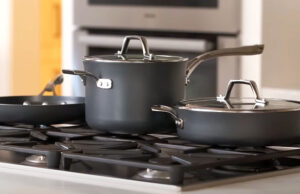Installing a dishwasher in your kitchen when one wasn’t there before might sound like a big task, but don’t worry! It’s totally doable. In this article, we’ll walk you through everything you need to know about installing your dishwasher from scratch. Whether you’re a DIY pro or just a beginner, we’ve got you covered! So grab your tools, and let’s make your life easier by getting that dishwasher up and running in no time.
Understanding the Basics of Dishwasher Installation
Before jumping into the installation process, it’s important to understand the basics. A dishwasher needs three things to function properly: water supply, drainage, and power. These are the essential connections you’ll be working with when installing a dishwasher in a spot where there was none before.
Why You Need Water Supply, Drainage, and Power
The dishwasher needs to connect to your home’s water supply to get water for washing the dishes. It also needs a drainage system to get rid of dirty water after washing. Plus, it needs power to run, so it can complete its cycles and clean your dishes.
Do You Have the Space for It?
One of the first things to check is whether you have enough space in your kitchen for a dishwasher. Dishwashers typically come in two sizes: full-size (24 inches wide) and compact (18 inches wide). If you don’t have an existing space for a dishwasher, you’ll need to find a spot in your kitchen that fits.
Measure the area where you want the dishwasher to go. You’ll need at least 24 inches wide for a standard dishwasher. Also, keep in mind the space around the dishwasher for easy access. You don’t want it to be too cramped!
Choosing the Right Dishwasher
Picking the right dishwasher for your kitchen is crucial. Dishwashers come in many different models, including built-in, portable, and under-the-counter types. If you are installing a dishwasher where there was none before, you will most likely be going with a built-in model.
Look for features that match your needs, like energy efficiency, noise levels, and cleaning performance. Some dishwashers even have extra features like adjustable racks or sanitizing cycles. You don’t need to break the bank, but it’s worth investing in a model that will last and meet your needs.
Preparing Your Kitchen for the Dishwasher Installation
Now that you know what you’re getting into, it’s time to prepare your kitchen for the installation. This means getting the necessary tools, materials, and making sure your kitchen is ready for the job.
Tools and Materials You’ll Need
Here’s a list of tools and materials you will need for the installation process:
- Dishwasher
- Adjustable wrench
- Drill with bits
- Teflon tape
- Phillips and flathead screwdrivers
- Water supply line
- Drain hose
- Electrical wiring or plug (if needed)
- Dishwasher installation kit (often comes with the dishwasher)
Before starting the installation, make sure you have everything ready. Running to the store in the middle of a project is never fun!
Turning Off the Water and Power
Before doing anything, it’s important to turn off the water and power supply to the kitchen. This will prevent any accidents while you’re working. Shut off the water valve under the sink, and if your dishwasher requires electricity, make sure to turn off the breaker at the fuse box.
Disconnecting the Old Fixtures
If you’re replacing an old dishwasher, start by disconnecting the old water supply, drain line, and power. Carefully remove any hoses and wires from the old appliance. If there’s any leftover water in the old dishwasher, make sure to drain it out to avoid any mess.
If there is no previous dishwasher and you’re installing a new one where there was none, you’ll need to make space for your new dishwasher by clearing out cabinets or countertops.
Preparing the Space for New Connections
Next, you need to make sure you have a water supply line, drain line, and an electrical connection ready for your new dishwasher. If these are already present, you’re one step ahead. If not, you’ll need to make sure they’re installed and positioned correctly. This is where you might need to call a plumber or an electrician for help, depending on the complexity of the work.
Installing the Dishwasher
Now comes the fun part – actually installing the dishwasher! This step-by-step guide will help you connect all the necessary parts and get the dishwasher ready for action.
Connecting the Water Supply
The first connection you’ll need to make is the water supply. You will need a water inlet valve, which connects your dishwasher’s water line to your home’s plumbing system. To do this, use an adjustable wrench to tighten the connection between the dishwasher’s water line and the valve. Make sure the connection is tight to avoid any leaks later.
Once the water line is connected, double-check that everything is secure before moving on.
Attaching the Drain Line
Next, you need to connect the drain line from your dishwasher to the sink drain or garbage disposal. This hose carries away the dirty water after the dishwasher has finished cleaning the dishes. You can either connect the drain line to an existing garbage disposal or to a dedicated drain line under the sink.
To do this, secure the drain hose tightly with a hose clamp. Make sure the hose has no kinks or bends that could prevent water from draining properly.
Connecting the Electrical Power
If your dishwasher doesn’t come with a plug, you’ll need to hardwire it into the electrical system. This step can be tricky, and it’s important to follow the manufacturer’s instructions carefully. If you’re not comfortable working with electricity, it’s best to hire an electrician to do this part for you.
For dishwashers with a plug, simply plug it into an electrical outlet that meets the dishwasher’s power requirements. Make sure the outlet is GFCI-protected for safety.
Leveling the Dishwasher
Once your dishwasher is connected to water, drainage, and power, it’s time to install the dishwasher in its place. Slide the dishwasher into its spot and check if it’s level. Use a level tool to make sure the dishwasher is sitting flat on the floor. Adjust the legs of the dishwasher if necessary to ensure it’s perfectly level.
Proper leveling is important for the dishwasher to work efficiently and to prevent leaks.
Securing the Dishwasher in Place
Now, you’ll need to secure the dishwasher to the cabinet or countertop. Use screws to fasten the dishwasher to the sides of the cabinet, ensuring it’s steady and won’t move. Most dishwashers come with brackets for this purpose.
Double-check that everything is secure before proceeding to the final steps.
Testing and Final Adjustments
With everything connected, it’s time to test the dishwasher and make any necessary adjustments. This is where you’ll make sure everything is working properly before finishing up.
Turning On the Water and Power
Go ahead and turn the water supply back on. Check for any leaks around the water connection, drain hose, and other parts. If you notice any leaks, tighten the connections and recheck.
Once you’re sure there are no leaks, turn the power back on. Set the dishwasher to run a short cycle to make sure it’s working as it should.
Checking for Proper Drainage
After the cycle is complete, check the drain hose to make sure the water has drained out properly. There should be no standing water in the bottom of the dishwasher.
Making Final Adjustments
If everything seems good to go, you’ve successfully installed your dishwasher! If you notice any issues, like water not draining properly or strange noises, go back and double-check the connections and adjustments.
I hope this article helped you understand the process of installing a dishwasher where there was none before. It may seem like a challenging project, but with the right tools and instructions, it’s definitely doable. Enjoy the convenience of your new dishwasher and the time you’ll save on washing dishes!
Frequently Asked Questions
Is it hard to install a dishwasher where there was none before?
Installing a dishwasher from scratch can be tricky if you don’t have the necessary plumbing or electrical connections, but with the right tools and guidance, it’s manageable for most DIYers.
Can I install a dishwasher without professional help?
Yes, many people can install a dishwasher themselves with some basic plumbing and electrical knowledge. If you’re unsure about the electrical or plumbing work, consider hiring a professional.
Do I need to hire a plumber to install a dishwasher?
If the necessary plumbing connections (water supply and drainage) are already in place, you may not need a plumber. However, if you’re installing a dishwasher in a spot with no existing plumbing, you may need to hire a professional.
Is it safe to work with electricity when installing a dishwasher?
If you’re not familiar with electrical work, it’s safest to hire a professional. If you do it yourself, make sure to follow all safety precautions and manufacturer guidelines.
Can I install a dishwasher without a garbage disposal?
Yes, you can install a dishwasher without a garbage disposal. The dishwasher can be connected to a separate drain line instead of the disposal.
Do I need to level the dishwasher during installation?
Yes, leveling the dishwasher is very important for it to operate efficiently and prevent leaks. Make sure to check the level after installation.
Is it necessary to use Teflon tape on the water connections?
Teflon tape helps prevent leaks at the water connections, so it’s a good idea to use it to ensure a tight seal and avoid any water leakage.
Can I use a portable dishwasher in a space where there was no dishwasher before?
Yes, if your space doesn’t have the plumbing or electrical connections for a built-in dishwasher, a portable dishwasher might be a good option.



